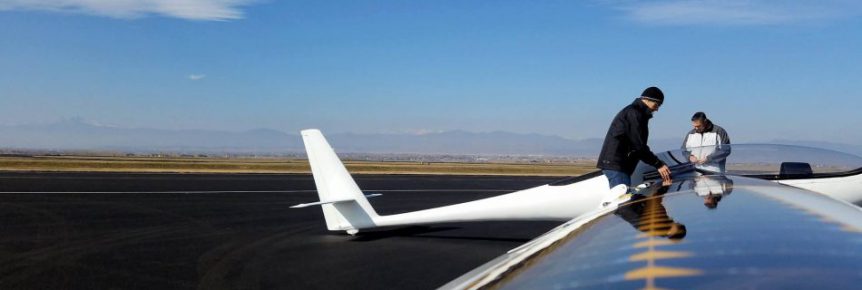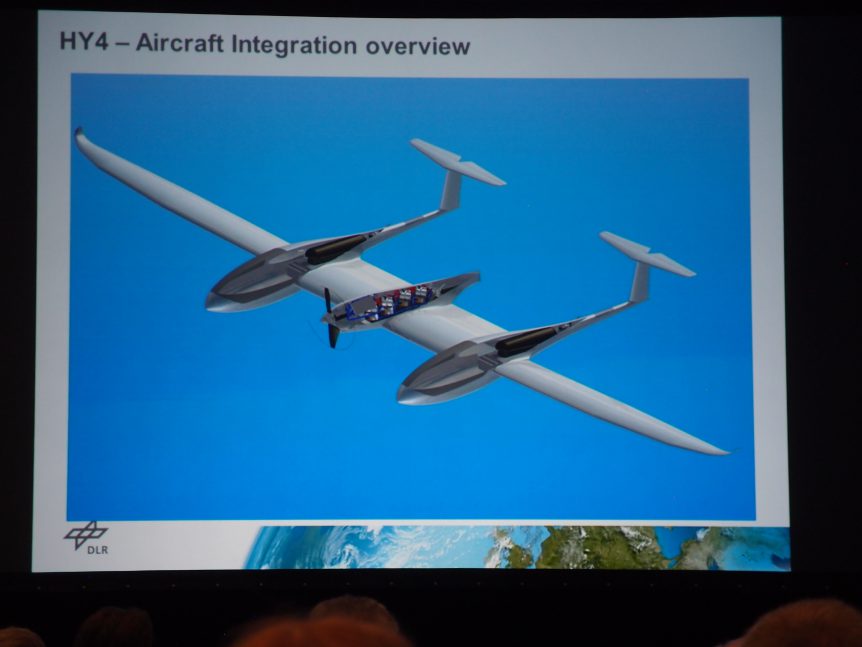George E. Bye. CEO and founder of Bye Aerospace, is on a roll these days, selling a large number of SunFlyer 2 training aircraft, delivering Silent Falcon solar electric unmanned aerial vehicles (UAVs), partnering in the TriFan 600 project with XTI Aircraft, and overseeing the first flight of the StratoAirNet prototype. A letter from Diane Simard, Senior Vice President of Bye Aerospace, Inc., reports “the successful completion of the first flight of the solar electric technology demonstrator prototype for its “StratoAirNet” and “Solesa” families of medium-altitude aircraft systems.” Flying from the Northern Colorado Regional Airport, north of Loveland, the sailplane-based optionally-piloted vehicle has made additional flights since its maiden outing. Bye expressed happiness at the event and gave thanks to those who made it possible. “It was a great day for solar-electric aviation. My thanks to our entire team for their persistence and extra efforts to achieve this milestone. I would also like to thank the professionals at Northern Colorado …
Sustainable Skies in San Francisco
I’m writing this in the first person, rather than the usual third-person voice that allows me to remain objective about things on which I report. In this case, I have been the recipient of much joy over the last ten years from being an observer of the ongoing progress in electric aviation. Dr. Brien Seeley, founder of the Sustainable Aviation Foundation, asked me to begin writing a blog about electric aviation in 2009. One of my original postings concerned a Kitplanes Magazine contributor, David Ullman – who was this year’s Sustainable Aviation Symposium’s keynote speaker. In 2009, he predicted a great future for electric aviation – most of which has come to pass, and some of which he is creating in his hangar with his fully-instrumented wind tunnel and ambitious blown-wing design. He proposes something called USTOL, Ultimate Short Takeoff and Landing, aircraft that will use a dynamic relationship between their power and lift systems. His vehicle for demonstrating this …
Goshawk Goes Electric
The GosHawk was conceived as an electric aircraft and technology has FINALLY caught up with it, according to designer Greg Cole. Its sailplane-like proportions allow it to fly with the smallest of power inputs, and real soaring is possible with the electric propulsion system completely shut down, Greg says. This author finds it suits its namesake with a sporty nature and a natural beauty. The GosHawk is also planned in two additional versions with internal combustion engines. The HKS 700E engine is a fuel-efficient two-cylinder unit seemingly ideal for motorgliders or touring gliders. His airplane with this engine’s 56 horsepower available can attain a 100 mile per hour cruise at a fuel consumption of 100 miles per gallon, or 200 passenger miles per gallon (pmpg). Greg also plans on using the ubiquitous Rotax in 85 BHP form. Its empty weight of 510 pounds with the HKS powerplant shows the skills Greg’s company, Windward Performance achieves with pre-impregnated carbon fiber layups. …
Déjeuner sur le Duckhawk
This grab shot taken at the flight demonstration of the Windward Performance Duckhawk on April 22 in Bend, Oregon, resembles, in a totally accidental way, Manet’s great painting, Déjeuner sur l’Herbe (picnic on the grass). Although your editor tried convincing them, no one would doff his or her clothes to make the homage to Manet complete. Duckhawk is a beautiful, light-weight (420 pounds empty) standard-class 15 meter wingspan sailplane, stressed for over 12 G’s to enable dynamic soaring, taking advantage of horizontal wind gusts like soaring birds do – the first to be designed specifically to explore this realm of flight. It is designed by Greg Cole and built by the people who are almost done with Perlan II, designed to go to 90,000 feet. Both sailplanes will push the state of the art to new extremes. Although Duckhawk shares the look of its smaller sibling, the Sparrowhawk, it has beefier spars and a standard-class 15-meter (49.2 feet) wing with a …
Albatross, Dragonflies, and Hummingbirds
Your editor took a trip to Tehachapi, once home of the infamous California Women’s’ Correctional Institution, mentioned in no less than three 1940’s films noirs. (It’s now a gray-bar hotel for bad boys, not bad girls.) Lesser offenses were in mind, though, since Labor Day weekend has been the time for 31 meetings of the Experimental Soaring Association’s Western Workshop. The group, devoted to improving sailplanes and testing the limits of soaring technology, has been in the forefront of many significant developments, and its members include many record holders and aerodynamics experts. This year’s convocation included talks on birds, dragonflies (the Libelle sailplane), and even a demonstration of Aerovironment’s spy hummingbird, a camera-toting drone no larger than a 90-percentile member of the Trochilidae family. Phil Barnes kicked off the Saturday talks, showing his incredible computer simulations of the dynamic soaring flight of the Albatross, which included an impassioned plea to help preserve this magnificent bird. He noted that “gyres” of plastic slurry distributed …


